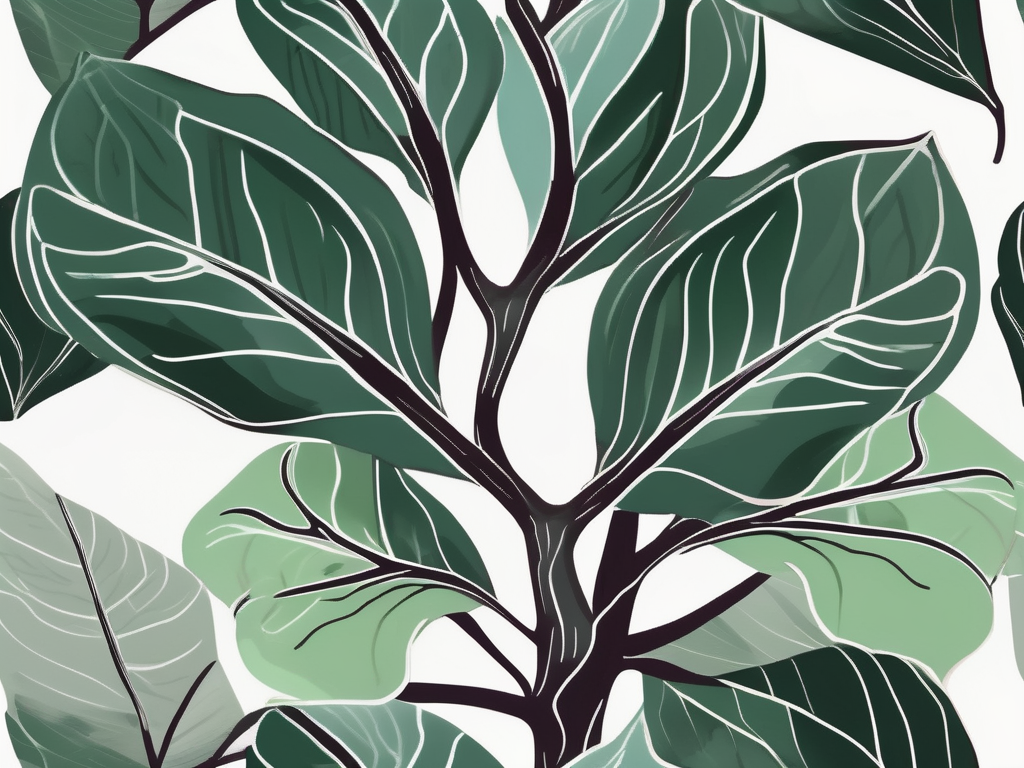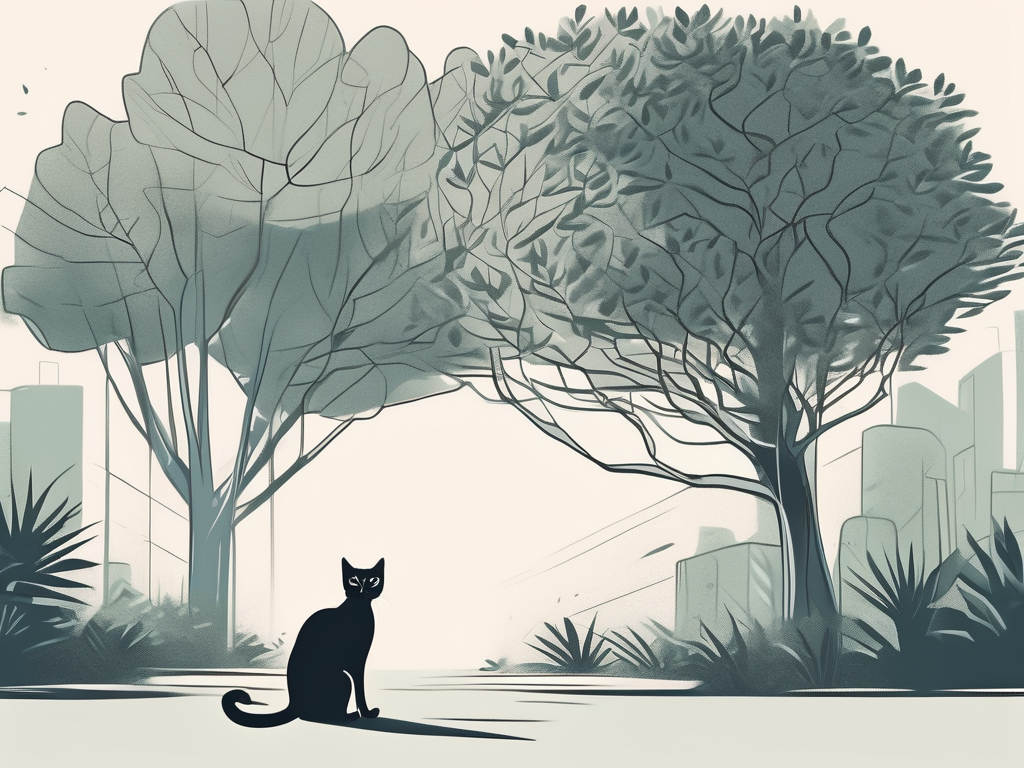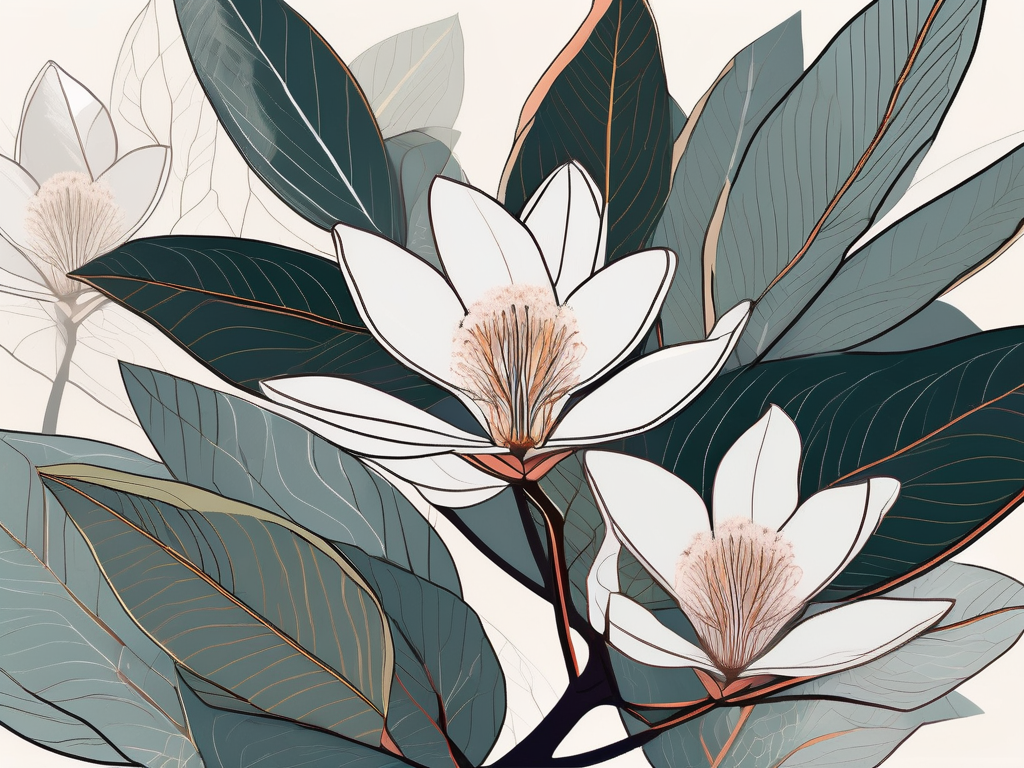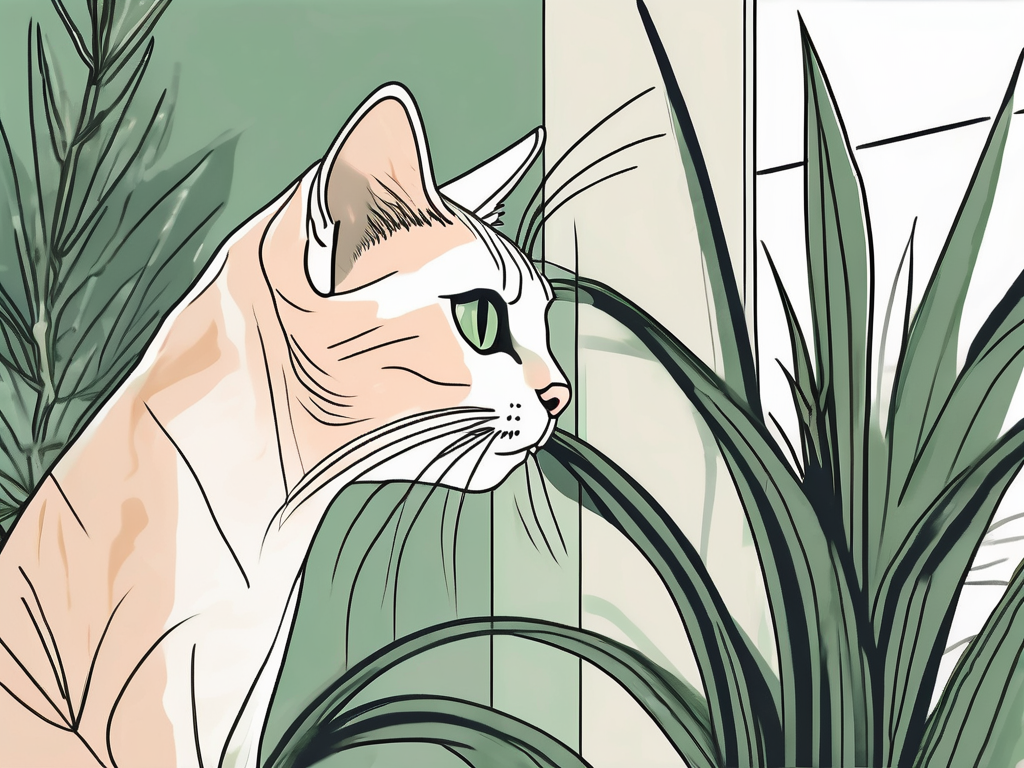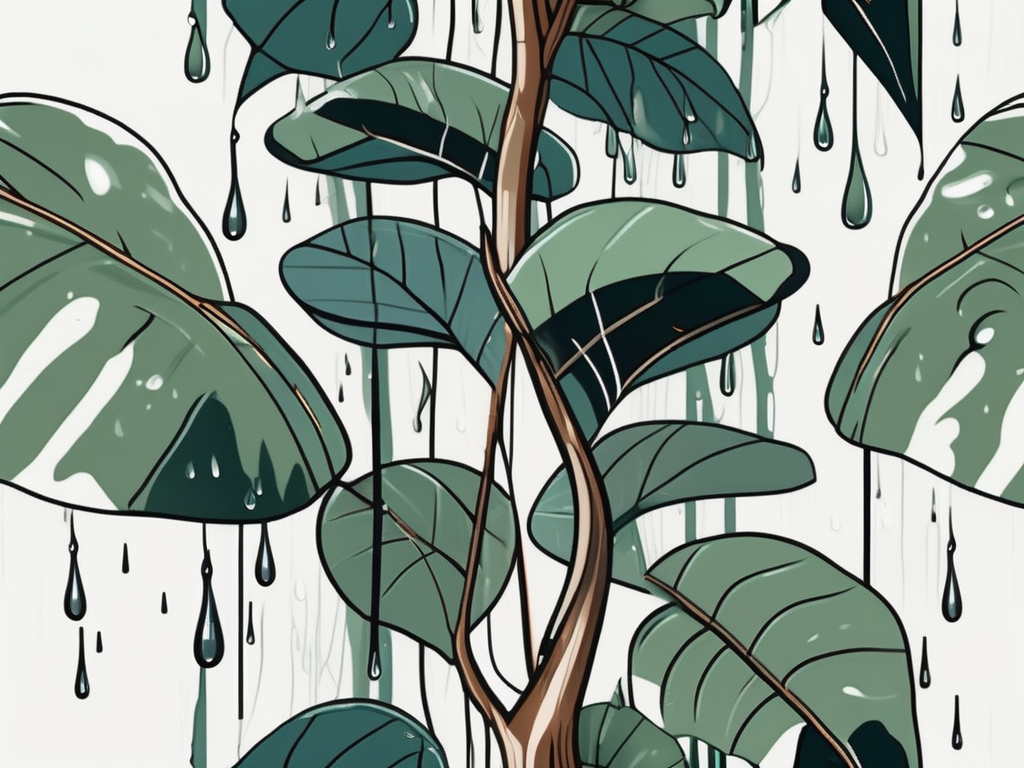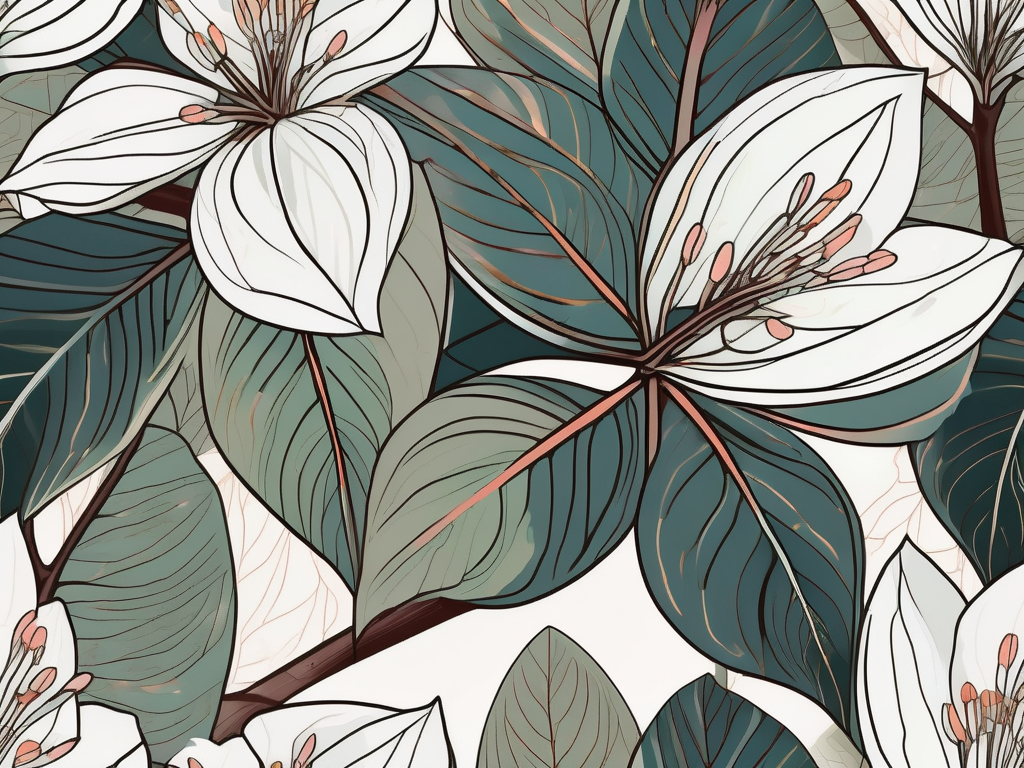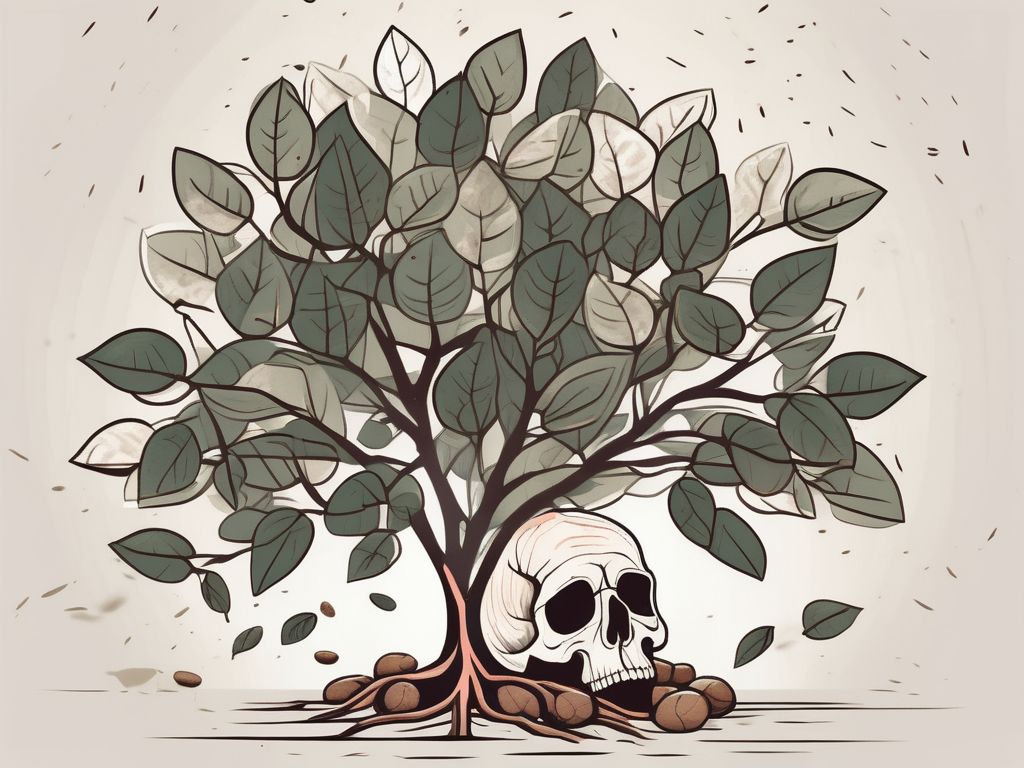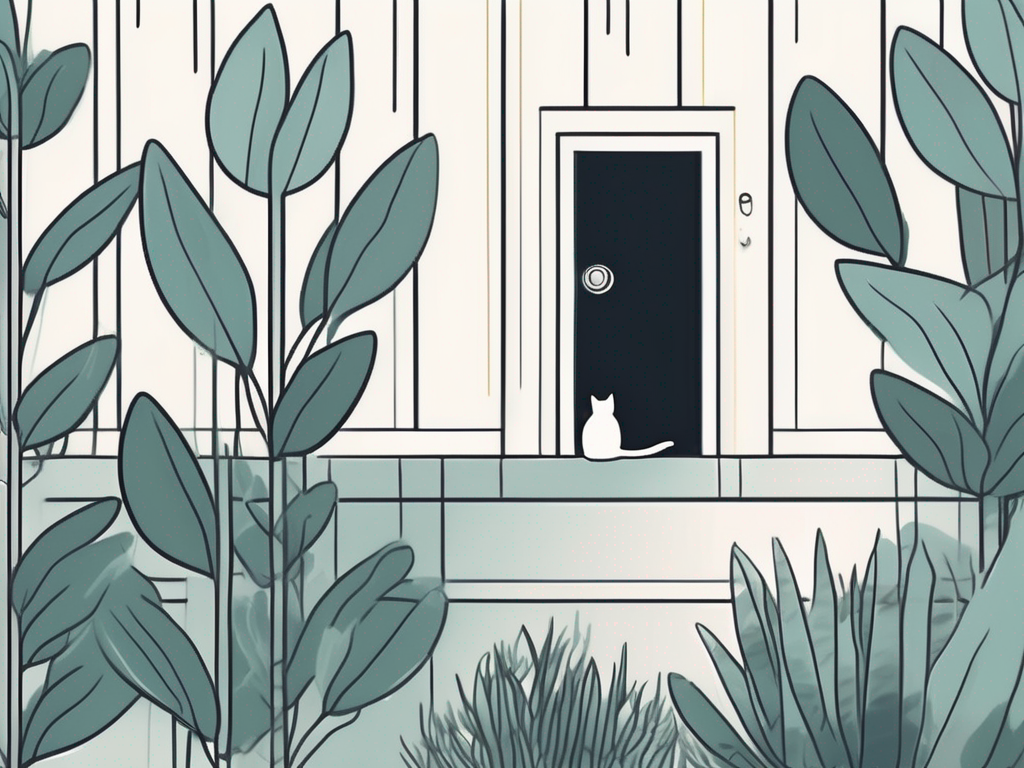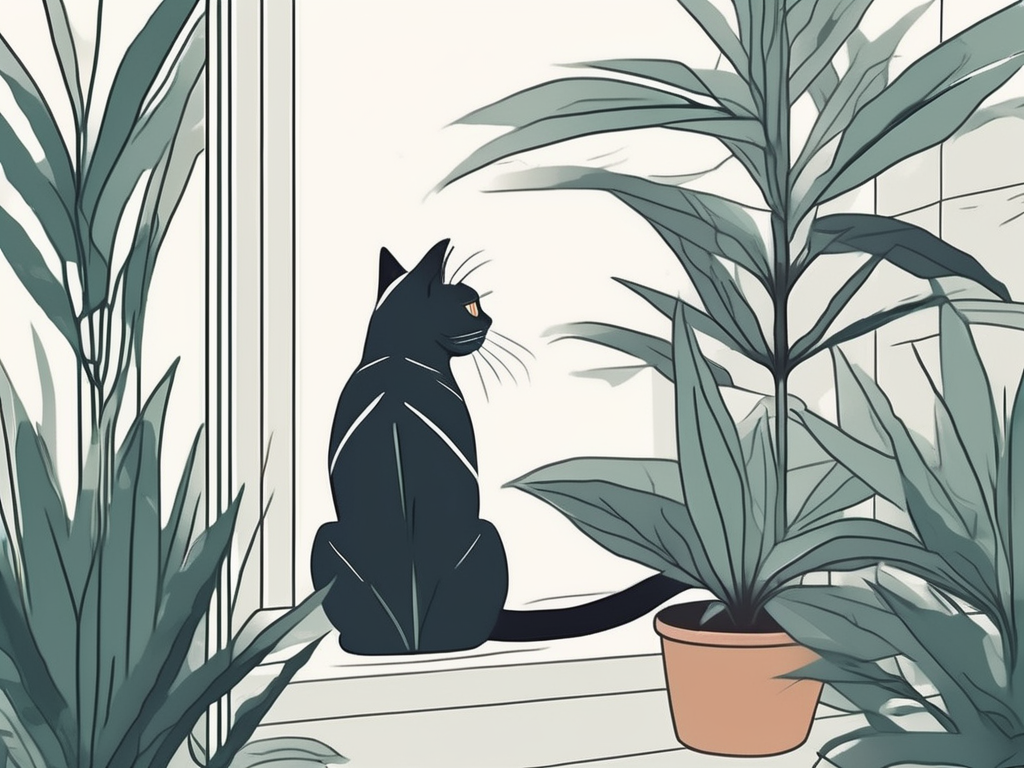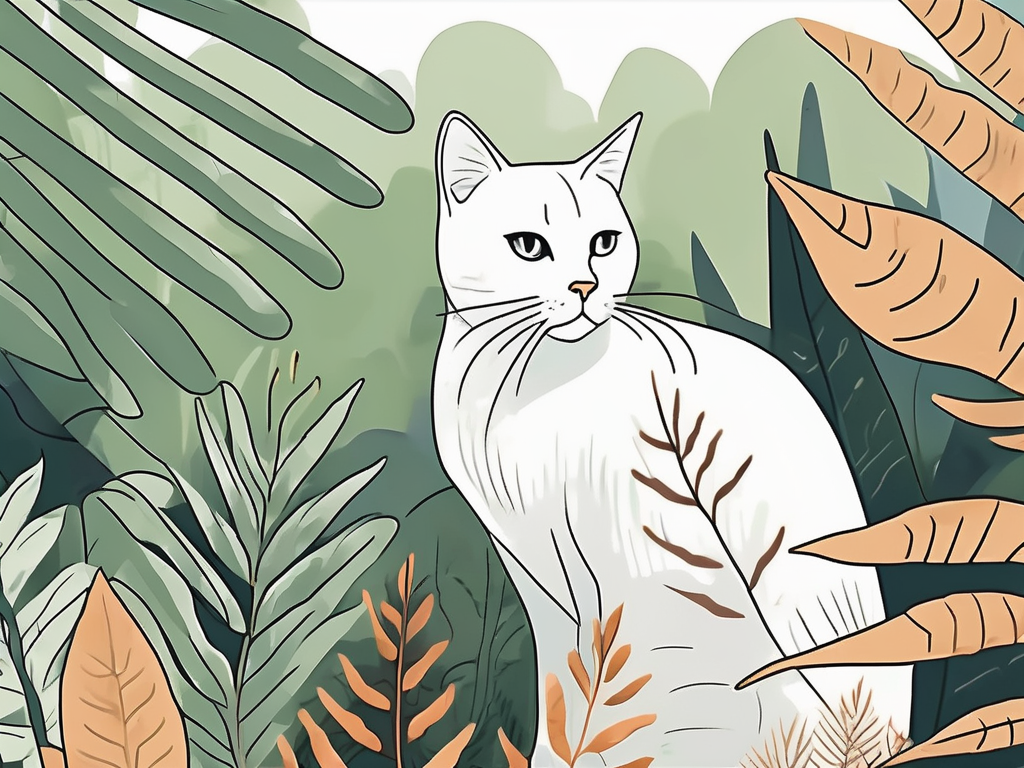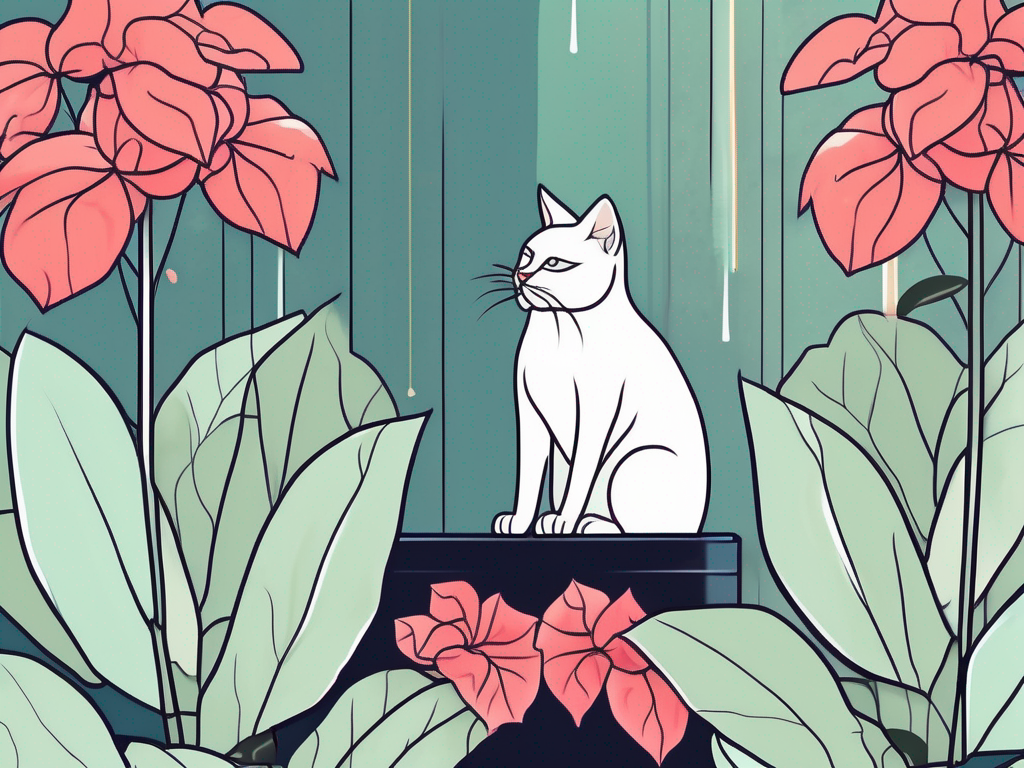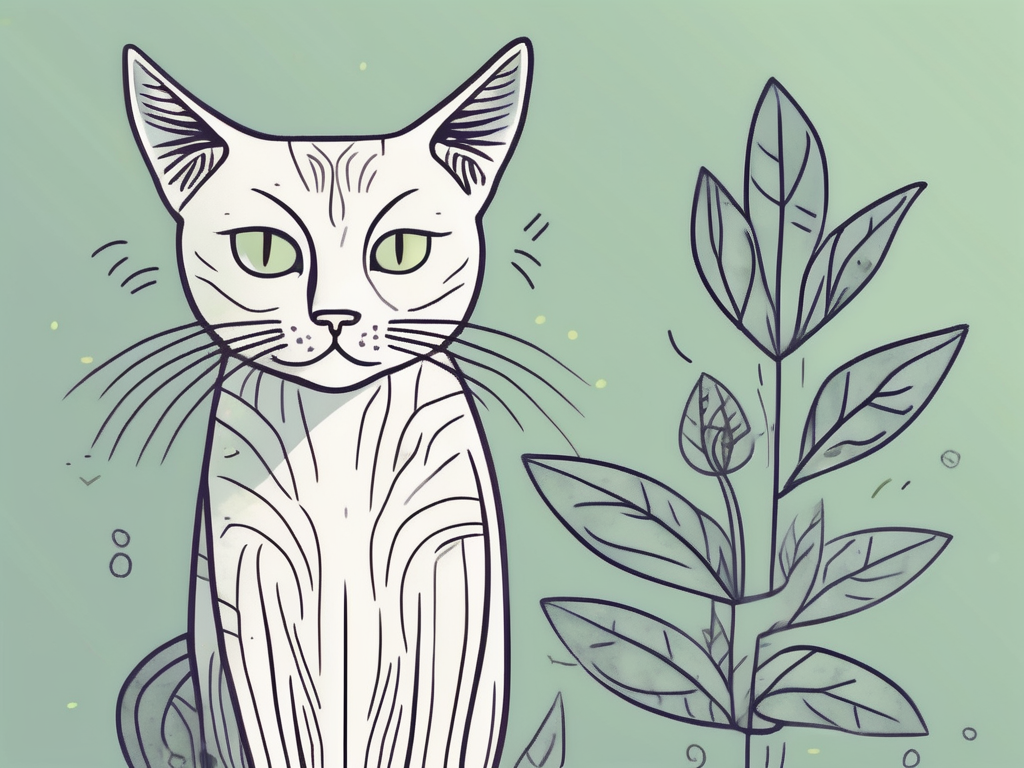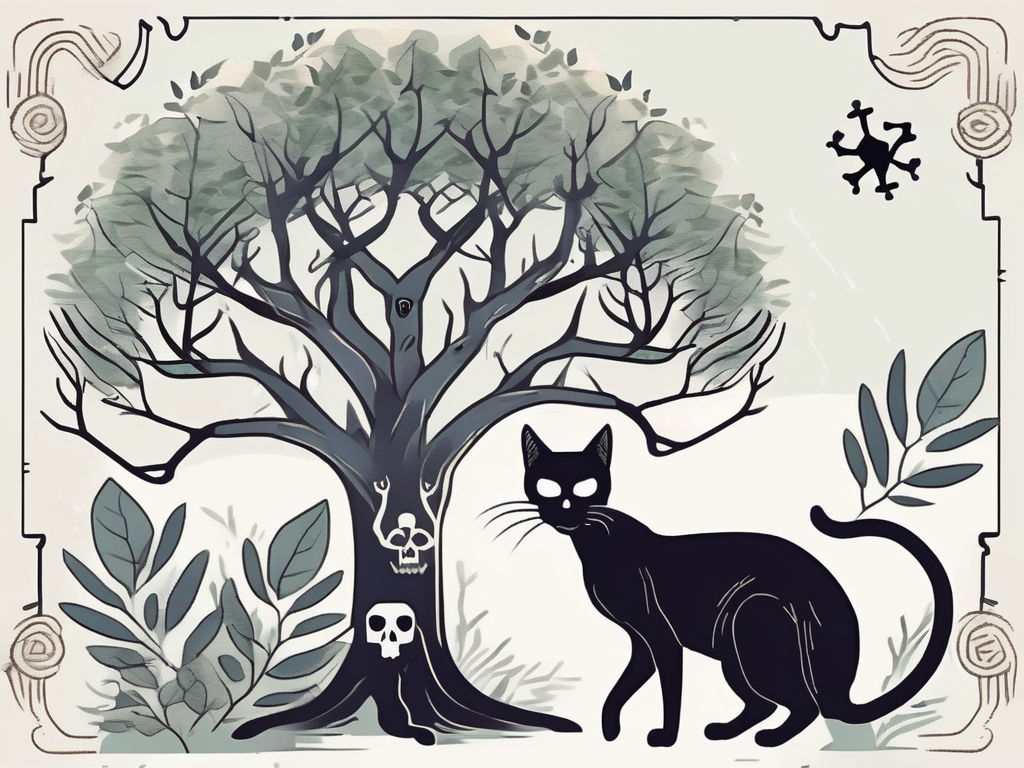
Houseplants add a touch of nature to our homes and can really brighten up any space. However, if you're a pet parent, the safety of your furry friends is a top priority. One common concern revolves around the rubber tree plant and its potential toxicity to cats. It's a question that leaves many cat owners scratching their heads: Is the rubber tree toxic to cats?
In this article, we'll explore the topic by looking at different types of rubber trees, what makes them potentially harmful to your feline friends, and how you can keep both your plants and pets safe. We’ll also share some alternative plant options that are both cat-friendly and stylish for your home.
Types of Rubber Trees and Their Characteristics
First, let's clear up a bit of confusion. When people talk about rubber trees, they might be referring to a few different plants. The most common type is the Ficus elastica, known as the rubber plant, which is popular for its glossy, thick leaves and easy-to-care-for nature. This plant isn't just a pretty face; it’s also a part of the fig family and can grow quite large if given the space.
Then there's the Ficus benjamina, or weeping fig, which is another popular houseplant often mistaken for the rubber plant. It has thinner, more delicate leaves and a more elegant draping appearance. Lastly, there’s the Hevea brasiliensis, the true rubber tree, which is actually where natural rubber comes from. However, this tree is more commonly found in plantations rather than living rooms.
Each of these plants has its own unique features and care requirements. The rubber plant, for instance, thrives in bright, indirect light and prefers its soil to dry out between waterings. The weeping fig, meanwhile, can be a bit more finicky about its environment but rewards you with beautiful foliage if cared for correctly. While these plants are fantastic additions to any home, it's crucial to know which ones might pose a risk to your curious kitty.
Understanding Plant Toxicity
Before diving into specifics about rubber plants, it's useful to understand what plant toxicity means. Some plants contain compounds that can cause adverse reactions in pets if ingested. These reactions can range from mild, like drooling or nausea, to severe, such as difficulty breathing or even organ failure. It's worth noting that the level of toxicity can vary significantly depending on the plant and the part of the plant ingested.
In the case of rubber plants, the primary concern lies in their sap. When a leaf or stem is broken, the plant releases a milky sap that can be irritating. For cats, who are naturally curious and might chew on leaves or stems, this sap can cause digestive issues if swallowed. Additionally, it can irritate their skin or eyes, leading to discomfort and the need for a trip to the vet.
It’s always a good idea to be vigilant about what plants you're bringing into your home and to research their potential effects on pets. It's not just about keeping your plants alive but also ensuring they’re safe for your four-legged family members.
Symptoms of Plant Poisoning in Cats
So, how can you tell if your cat has had an unfortunate encounter with a toxic plant? Cats are masters at hiding discomfort, but there are some signs you can watch for. If your cat has nibbled on a rubber plant, you might notice the following symptoms:
- Drooling or foaming at the mouth
- Vomiting or diarrhea
- Pawing at the mouth or face
- Swelling around the mouth or face
- Difficulty breathing
- Lethargy or unusual behavior
These symptoms can vary in severity, depending on how much of the plant your cat has ingested. If you notice any of these signs, it's important to contact your veterinarian immediately. They can provide guidance on the next steps, which might include bringing your cat in for a check-up.
Remember, it's always better to err on the side of caution when it comes to your cat's health. Quick action can sometimes make all the difference.
Keeping Cats and Plants Safe
Now that we've established that rubber trees can be harmful to cats, what can you do to keep both your plants and your pets safe? Here are a few practical tips:
- Placement is key: Position your rubber tree in a spot that's difficult for your cat to access. High shelves or hanging planters can be a great solution.
- Training: While cats can be independent and a bit stubborn, they can be trained to stay away from certain areas or objects. Use positive reinforcement to discourage your cat from approaching your plants.
- Alternative plants: Consider replacing toxic plants with cat-friendly alternatives. We'll dive into some options in the next section.
- Physical barriers: Use decorative screens or plant cages to create a barrier between your plant and your curious cat.
- Distractions: Provide plenty of toys and activities to keep your cat entertained, reducing their interest in your plants.
By implementing these strategies, you can enjoy the beauty of your houseplants without worrying about your cat's safety. Plus, having an enriched environment for your cat can lead to a happier, healthier pet overall.
Cat-Friendly Alternatives to Rubber Trees
If you're hesitant about keeping a rubber tree in your home due to the potential risk, there are plenty of cat-friendly alternatives to consider. These plants can offer similar aesthetic appeal without the worry of toxicity.
- Spider Plant: Known for its long, arching leaves and ease of care, the spider plant is non-toxic to cats and can thrive in various lighting conditions.
- Bamboo Palm: This plant brings a touch of the tropics to your home and is safe for pets. It does well in indirect light and can help purify the air.
- Boston Fern: With its lush fronds, the Boston fern is a classic choice for plant lovers. It’s safe for cats and can add a pop of green to any room.
- Areca Palm: This elegant plant is pet-friendly and can grow quite tall, making it a striking addition to your home decor.
- Calathea: Known for its stunning leaf patterns, Calathea is a beautiful, non-toxic option for cat parents looking to add some visual interest.
By opting for these plants, you can enjoy a home filled with greenery without the stress of potential pet harm. Plus, each of these options has its own unique charm and can complement various interior styles.
Creating a Pet-Safe Plant Environment
Having a pet-safe plant environment doesn't mean you have to give up on having a stylish, green home. With a little creativity and planning, you can achieve both. Here are some ideas to create a harmonious space for both your plants and your pets:
Use Vertical Space
Consider using tall plant stands or wall-mounted planters to keep your greenery out of reach. This not only protects your plants but also adds an interesting visual element to your home decor.
Choose Sturdy Containers
Cats are naturally curious and might knock over lightweight pots. Opt for heavier containers that are less likely to tip over. This will keep your plants secure and prevent any soil spills.
Incorporate Pet Furniture
Cat trees or shelves give your feline friends their own space to explore and relax. Integrating these into your home can reduce their interest in your plants while providing them with an activity zone.
By making these adjustments, you can create a beautiful, cohesive living space that respects both your love for plants and your cat's safety.
Dealing with Plant Damage
If your cat does manage to get into your plants, don't panic. While it can be frustrating to see a chewed-up leaf or a toppled pot, there are ways to handle the situation calmly and effectively.
- Prune Damaged Leaves: Trim away any chewed or damaged leaves to encourage new growth. Most plants are resilient and will bounce back with a little care.
- Re-pot if Necessary: If your cat has knocked over a pot, gently re-pot the plant and add fresh soil if needed. Ensure the plant is stable and in a safe location.
- Monitor Your Cat: Keep an eye on your cat for any signs of distress or illness. If you notice anything unusual, contact your vet immediately.
By taking these steps, you can help your plant recover and ensure your cat remains healthy. Remember, accidents happen, and being prepared can make all the difference.
Why Cats Are Attracted to Plants
You might wonder why cats seem so interested in plants in the first place. It turns out, their attraction often stems from a combination of curiosity and instinct.
Cats are natural explorers, and the texture and movement of plants can be intriguing to them. Some plants also have scents or flavors that cats find appealing. Additionally, chewing on leaves might help with their digestion or reduce stress.
Understanding these instincts can help you better manage your cat's interest in plants. Offering safe alternatives like cat grass or catnip can satisfy their curiosity without putting your houseplants at risk.
Pet-Friendly Plant Care Tips
Caring for houseplants when you have pets requires a bit of extra attention. Here are some tips to help you maintain a thriving plant collection while keeping your pets safe:
- Regular Maintenance: Keep your plants healthy with regular watering, pruning, and fertilizing. A well-maintained plant is less likely to attract pests that might interest your cat.
- Non-Toxic Pest Control: Avoid using chemical pesticides that could harm your pets. Opt for natural options like neem oil or insecticidal soap.
- Pet Deterrents: Use pet-safe deterrents like citrus peels or diluted vinegar sprays to discourage your cat from approaching certain areas.
- Secure Loose Soil: Cover the soil surface with stones or a layer of mulch to deter digging and prevent messes.
With these care tips in mind, you can enjoy a lush, green home without compromising your pet's safety. It's all about finding the right balance between your love for plants and your commitment to your pet's well-being.
Final Thoughts
We've covered a lot about rubber trees and their potential risks to cats. By understanding the different types of rubber trees, recognizing symptoms of plant poisoning, and implementing safety measures, you can protect your furry friends while still enjoying a vibrant home filled with plants.
At Cafe Planta, we believe that plants have the power to bring people together and enhance any living space. Whether you're looking for plant care tips or seeking that perfect new addition to your home, we're here to help. If you have any questions, feel free to email us or send a message on Instagram. Let's create beautiful, thriving plant collections together!













